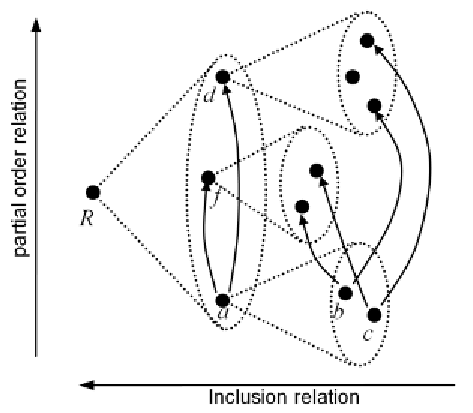Database Reference
In-Depth Information
tuple members are represented by storing identities which correspond to conventional object references.
Hence this principle means that object references represent greater elements.
Inclusion and partial order relations are connected using
type constraint
:
e
∧
b
∧
ex
∧
bx
In terms of the extension operator it can be equivalently written as follows:
b
:
e
∧
(
bx
):(
ex
)
This condition means that if an element sets some value for its dimension then its extensions are
permitted to extend this value using this same dimension but they cannot set arbitrary value for it.
A concept-oriented database is formally defined as a
nested partially ordered set
(
R
,
∧
,<) where
elements are identity-entity couples and strict inclusion and strict partial order relations satisfy type
constraint. This structure can be produced from a partially ordered set if we assume that an element can
itself be a partially ordered set. Alternatively, it can be produced from a nested set if we assume that its
elements are partially ordered. An example of a nested partially set is shown in Figure 1. Nested structure
spreads horizontally while partially ordered structure spreads vertically. For example, element
a
consists
of elements
b
and
c
which are its extensions. Simultaneously, element
a
has two greater elements
f
and
d
.
MODELING IDENTITIES
Object identity is an essential part of any programming and data model. Although the role of identities
has never been underestimated (Khoshafian et al, 1986; Wieringa et al, 1995; Abiteboul et al, 1998;
Kent, 1991; Eliassen et al, 1991), there exists a very strong bias towards modeling entities. There is a
Figure 1. Nested partially ordered set

